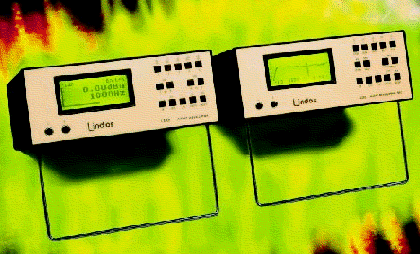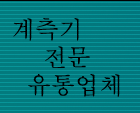|
| LINDOS
|
|

|
|
장 비 명
|
AUDIO ANALYZER
|
|
모
델 명
|
LA100
|
|
제
조 사
|
LINDOS
|
| |
|
|
|
|
|
장비 사양 |
|
|
|
|
Specification;
LA101 Audio Oscillator
Frequency range 5Hz to 38kHz, 3 steps (coarse) and 32 steps (fine) per octave.
Frequency accuracy Correct to 0.02% (200 ppm).
Frequency stability ?0ppm
Frequency resolution 32 spot frequencies synthesised over one octave, repeating, multiplied by 2,4,8 etc.
Level accuracy ?.03dB +26 to -60dBu, ?.2 ?0 to ?0dBu. Laser-trimmed resistors and software error corrections stored in EPROM.
Impedance accuracy ?% or ? W (whichever is the greater).
Amplitude range ?00 to +26dBu in 1dB or 0.01dB steps.
Amplitude flatness ?.05dB, 5Hz - 31.5kHz.
Waveforms Sine, square, triangular, sawtooth (positive and negative going), DC+ and DC-. A double tone with 70Hz separation is also available at 1kHz.
Tone bursts programmable frequency, level and duration (27 minutes max. 100탎 resolution). A series of tones or tone bursts can be easily programmed, and can be made to repeat. Start on zero crossing.
Distortion (THD+N) <-86dB (0.005%) 1kHz; <-86dB 400Hz, <-80dB (0.01%) 100Hz; <-76dB (0.016%) 6.3kHz; (all rms, 2f - 22kHz bandwidth). Combined LA101/102 measurement.
Output selection L/R/L+R or Mute. Muted channel is automatically terminated with selected impedance.
Output impedance 10 W at rear XLRs. 75 W or 600 W selectable on front jack sockets. Balanced and floating, separate resistors. Other output impedances available to special order.
Minimum load 600 W at +20dBu one channel, or +18dB both channels loaded.
Weighting curves RIAA; CCIR 468; O41; 50탎 de-emphasis; plus 5 user programmable weighting curves.
Sequences Over 60 predefined test sequences and 10 user programmable sequences.
Segments 47 selectable test segments for user assembly.
FSK Frequency Shift Keyed data transmitted over signal path, 110 baud.
Presets 5 frequency and 5 level presets (user programmable)
Relative levels Any level can be set as a 0dB reference.
Z-correction Automatic level corrections for 600 W loading selectable.
LA102 Audio Measuring Set
Inputs 10k W and 600 W selectable. Differential inputs, with L/R selection.
Overload protection 100V rms, diode limited.
Level measurement -95 to +28dBu in 10dB ranges (autoranging/manual).
Default RMS 2Hz-100kHz -3dB, 20Hz-40kHz -0.2dB.
Options 2-5 RMS 22Hz-22kHz, VU 22Hz-22kHz, RMS A Wtd, PPM, VU A Wtd.
High pass filter 400Hz with12dB/octave selectable.
Audio band filter selectable with 22Hz 12dB/octave, 22kHz 36dB/octave.
Level resolution Numeric: 0.01dB steps. Bar graph: 0.2dB/pixel (default) 0.04dB/pixel (zoomed).
Level accuracy ?.05dB +28 to -60dBu, ?.2dB -60 to -80dBu
Frequency Reciprocal counting 20Hz-20kHz, 4-5 digit readout
Phase ?80? 20Hz to 20kHz with ??accuracy (up to 40kHz with reduced resolution).
Noise measurement -105 to +8dBu in 10dB ranges.
Default CCIR468-4 weighted quasi-peak.
Options 2,3,6,7 CCIR468-4 unweighted, RMS 22-22k, CCIR/ARM, CCIR RMS.
Residual Noise -97dBu CCIR468 wtd, -107dBu RMS 22kHz.
Rumble measurement Weighted slow (IEC98) (on noise option 5). Unweighted slow (IEC98) (on noise option 4).
Crosstalk -117 to +8dBu, narrow band measurement, automatic freq. selection. Measured with a two stage 12dB/oct bandpass filter. -1dB at 20% frequency error, -10dB at one octave.
Options1-6 100Hz, 315Hz, 1kHz, 6.3kHz, 10kHz, 40Hz. 400Hz instead of 315Hz available to order.
Options 7-9 80Hz-400Hz, 1.8kHz-21kHz and 12-21kHz bandpass.
Residual Noise -117dBu at 1kHz, -111dBu at 6.3kHz typical.
Distortion THD+Noise, relative, with automatic fundamental measurement and filter frequency selection. Measured with a combined multi-stage notch and high-pass filter. Frequency tolerance is ?% for 70dB rejection. No nulling required and the broad notch rejects flutter sidebands effectively. (-60dB @ +2%)
Options 1-6 100Hz, 315Hz (3rd harmonic), 1kHz, 6.3kHz, 10kHz, 40Hz.
Input Level Range -60dBu to +28dBu, noise limits readings below 0dBu.
Residual reading Combined specification as for LA101 above.
Response ?.5dB at 2nd harmonic, 22kHz 36dB/octave band-limited.
Wow & flutter -80dB to -20dB (0.01% to 10%).
Default weighted quasi-peak to IEC386, DIN45507.
Options 2,6,7 Unweighted quasi-peak, weighted RMS, Unweighted RMS.
Quantising distortion 40Hz notch, 400Hz HP, Wtd CCIR & Unwtd rms.
Difference frequency dist. 70Hz bandpass filter for 2nd order difference frequency distortion measurement on double tone with 70Hz separation (1kHz-20kHz).
FIM (Frequency Intermod.) To DIN45411 (3KHz/300Hz) to -60dB, 0.1%
Sequences Responds automatically to all LA101 sequences.
FSK speed tolerance ?% speed error allowed.
Monitor loudspeaker With volume setting and listen switch.
Scope/headphones output BNC 1V RMS output mid-scale and 0/+5V BNC sync. pulse.
22Hz-22kHz filter Elliptic design with 60dB rejection at 44kHz. This permits valid distortion measurement on digital equipment despite sampling residue.
Sequence results Sweeps produce a graph on the display with cursor readout, automatic scrolling and scaling facilities. Sequences produce a graph plus several pages of data with quick access.
Printout Sequence results can be printed directly on an Epson ESC/P, IBM or HP Deskjet compatible printer fitted with serial interface. Printout includes high resolution frequency response graphs.
Sequence results memories 5 sequence memories allow later printout or analysis.
Tolerance testing 5 user programmable tolerances in addition to 10 pre-programmed tolerances (Selftest, IBA, EPS81, EPS84, EPS98, Studer A812 etc)
Test tape mode LA102 can automatically measure frequency response, W&F and speed from a test tape, ignoring voice announcements and plotting an interpolated graph between the spot frequencies it finds. External frequency sweeps can also be used.
Common to Both Units
Standards All measurements meet quoted standards regarding weighting curves, accuracy, and meter ballistics.
Remote control The RS232 compatible serial interface provides complete control of measurements and access to results using a comprehensive set of ASCII commands. 5 pin domino DIN sockets.
Serial interface Inputs: Opto-isolated, +2V threshold. Outputs ?V. Compatible with most RS232 and RS423 equipment. 8 data bits, 1 start bit, 1 stop bit, no parity.
Baud rate 75, 110, 150, 300 (default), 1200, 2400, 4800 and 9600 (19200 baud also available on LA102 output only). Split baud rates supported.
Size 216mm(W) ?88mm(H) ?258mm(D). Weight: 3kg (LA101 or LA102).Display 71mm ?27mm.
Power requirement Mains 220-250V, 50-60Hz, 9VA, (110V option).
Battery life Automatic mains recharge in 36 hours.
Safety IEC1010
Temperature range 10-40캜 operating, 10-30캜 for full distortion specification.
Connectors PO 1/4" Jack (B gauge, small tip) & XLR-3 at rear.
Guarantee 1 year. Fast repair/software recalibration service available.
Technical support Lifetime technical support from Lindos via telephone (usually 24 hours), fax, mail or e-mail
EMC compliance Complies with the EMC directive (EN50081 & EN50082) when used with connecting leads as prescribed in the LA100 handbook.
Traceability Calibration eithertraceable to British National Standards or derived by approved ratio techniques.
Calibration Interval 2 years recommended.
Support Software Lin4win running under Windows 3.x or Windows 95 is supplied with each LA100. Connecting leads to a 9w D type serial port are included. 25w leads and additional licences available on request
|
|
|
|

|



